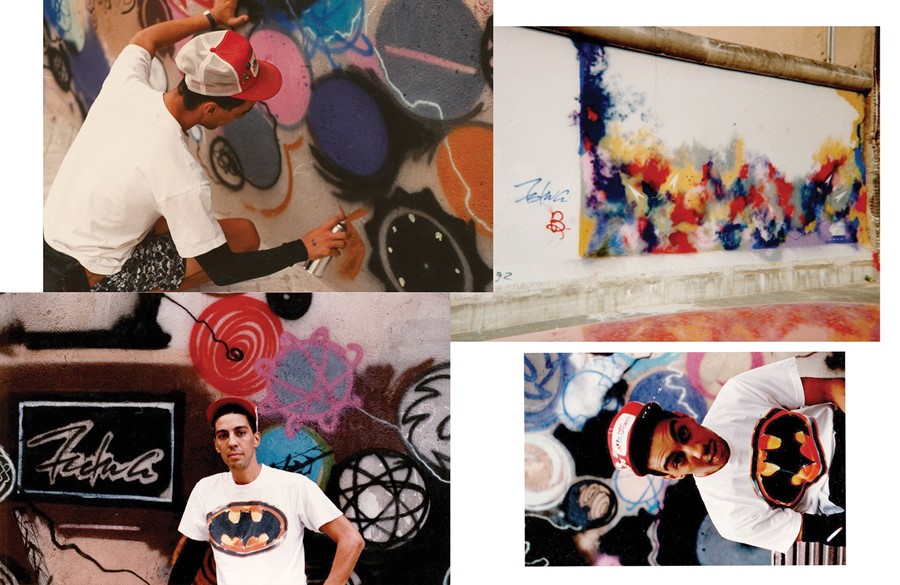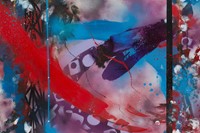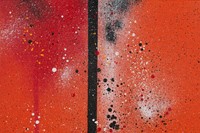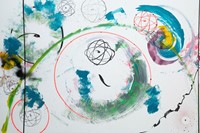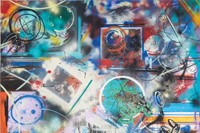In an exclusive excerpt from a new monograph of Futura, published by Rizzoli, fellow artist Takashi Murakami opens up about his relationship to the legend of contemporary art
It’s not an overstatement to say that Futura is a titan of contemporary art. Born and raised in New York City, Futura (real name: Leonard Hilton McGurr) honed his craft – which can best be described as an abstract graphic style of painting – adorning subways in the late 1970s. Among the very first graffiti artists to exhibited in contemporary galleries, his paintings were hung alongside works by the likes of Keith Haring and Jean-Michel Basquiat, among others. Fast forward a few decades, Futura has undertaken commissions from brands including A Bathing Ape, Stüssy and Supreme, in addition to Nike, Undercover and Virgil Abloh.
A new monograph published by Rizzoli brings together works from throughout Futura’s 40-year-long career, spanning paintings (some of which have never been published), drawings, photography and ephemera, which pay testament to his intimate relationship to – and immeasurable impact on – the art and wider culture of the street. Here, in an exclusive excerpt from this book, fellow artist Takashi Murakami opens up about his relationship to this artistic legend.
Since Futura had been a Ura-Harajuku fashion icon in Japan, especially in his association with NIGO, I thought he was someone in the fashion industry until just five or so years ago. Even now, of course, he has simultaneous collaboration projects with a number of fashion brands, including Off-White and Comme des Garçons.
Yet in fact he originated as a first-generation graffiti artist. I was not at all aware of the staggering fact that he was a genuine artist, who had debuted around the same time as Keith Haring and Jean-Michel Basquiat. When the boom for Neo-Expressionism wound down, he temporarily withdrew from the art scene to raise his children. After a hiatus of about 20 or 30 years, he re-emerged as a multi-faceted talent, being tremendously active seemingly everywhere for the past ten years.
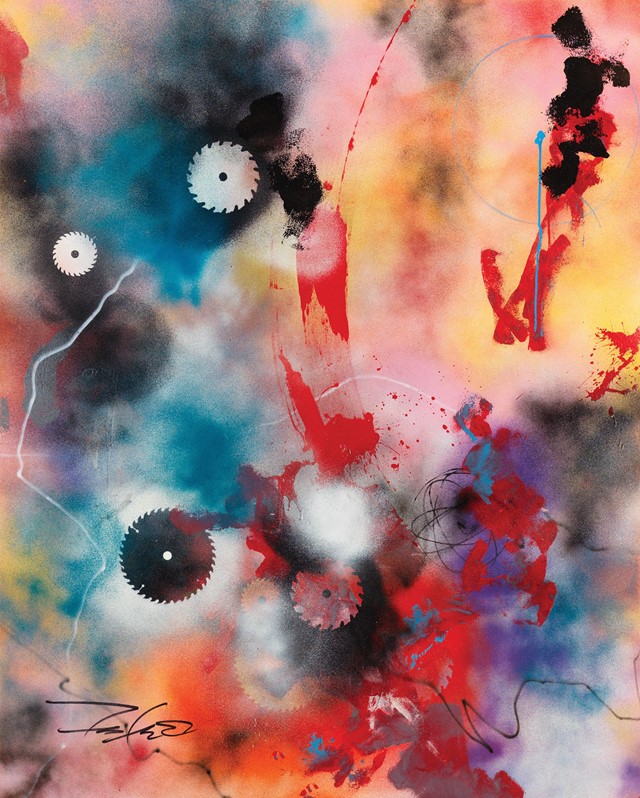
I have become very close with Futura 2000 – or Lenny, his real name – in the past year and a half or so. I approached him with a proposal to present his work in my gallery in Japan, and though we have both been too busy so far actually to realise his solo exhibition as of yet, we have been exchanging our various thoughts and opinions all this time, together with his manager, Sky Gellatly.
At the moment we are discussing my gallery’s potential role in Asia supporting his projects and productions, as well as sales of his works, but we still don’t know where things will go from here. Regardless, I am blown away every single day by Futura’s creative energy, which apparently only grows contrary to his age and seems single-mindedly to set its sights on the future. I feel as though I am basking in a legendary energy just by being associated with him. I am filled with expectations for what is still to come from him.
Futura: The Artist’s Monograph by Futura with an introduction by Carlo McCormick and texts by Virgil Abloh, Agnes b, Jeffrey Dietch, Sky Gellatly, Takashi Murakami, NIGO and Lee Quinones is published by Rizzoli.
A deluxe edition of the book featuring a cover individually painted by Futura coinciding with a Futura collaboration with Comme des Garçons Shirt collection, is currently available at Dover Street Market.
